A 2021 University of Utah Health study reported that more than half of all doctors, nurses and emergency responders treating COVID-19 patients were vulnerable to mental health issues ranging from depression and insomnia to anxiety and substance abuse. The risk was comparable to rates observed in healthcare workers following natural disasters and terrorist attacks.
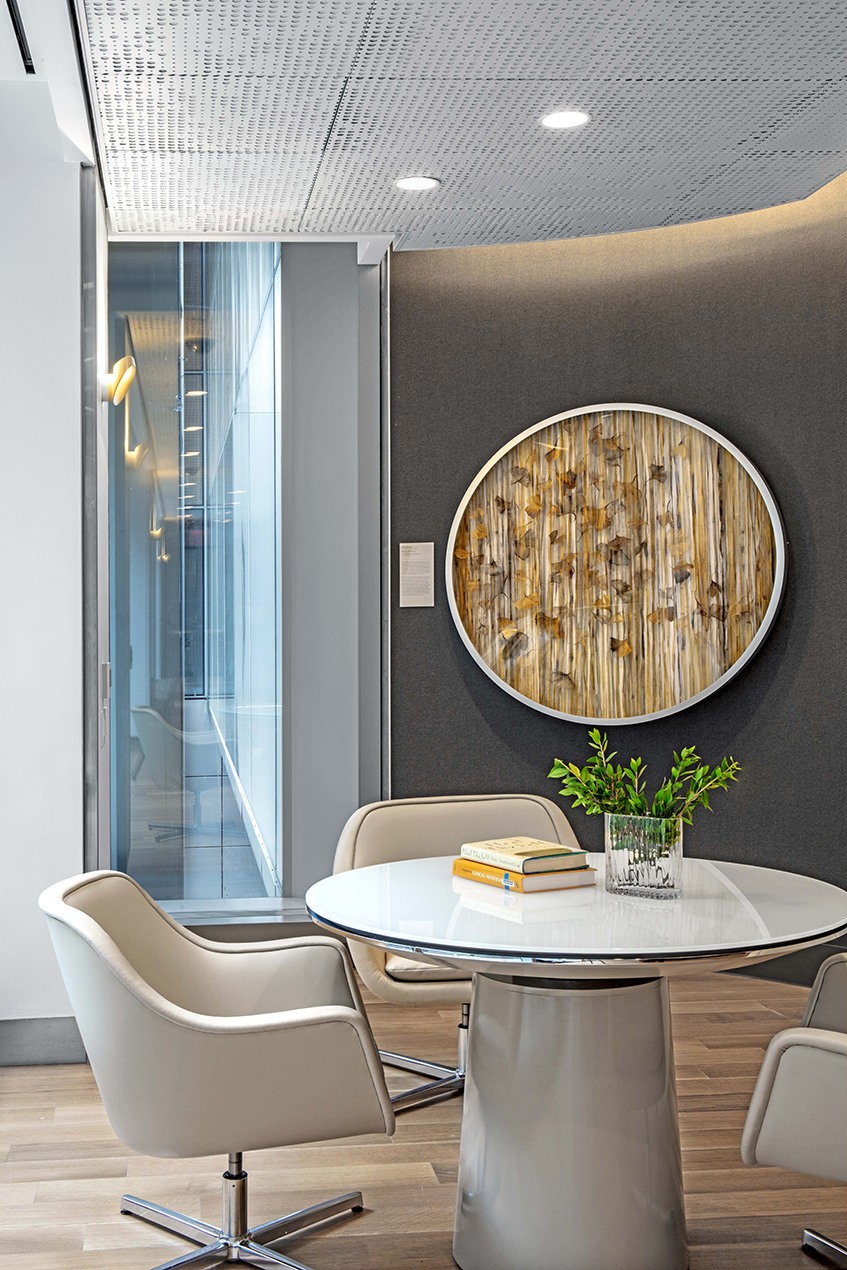
Designers can help health systems and healthcare organizations take a holistic approach to designing restorative spaces for their people. The best approach is to think about every aspect of a hospital building as an opportunity to boost staff health and wellness.
Frontline healthcare workers will, by nature, always will put patient welfare in front of their own. During the height of the pandemic, though, they had even less time than ever to take care of themselves. But even a few simple wellness-infused design strategies can give frazzled, time-crunched healthcare workers a few moments of respite.
Natural Connections
By now we’re all well-versed in the healing power of nature for patients. We need to remember that biophilic design elements also can offer mental health benefits for staff. Experiencing plants, water, breezes, natural patterns and nature-based images—even for short periods of time—can help healthcare workers relax and refocus. In addition to patient rooms, biophilic elements can be incorporated into high-traffic areas like hallways and nurses’ stations.
We all have an innate desire to experience direct connections with nature. Providing outdoor spaces where staff can soak up some sun, breathe in the fresh air and just “be” brings well-documented wellness benefits.
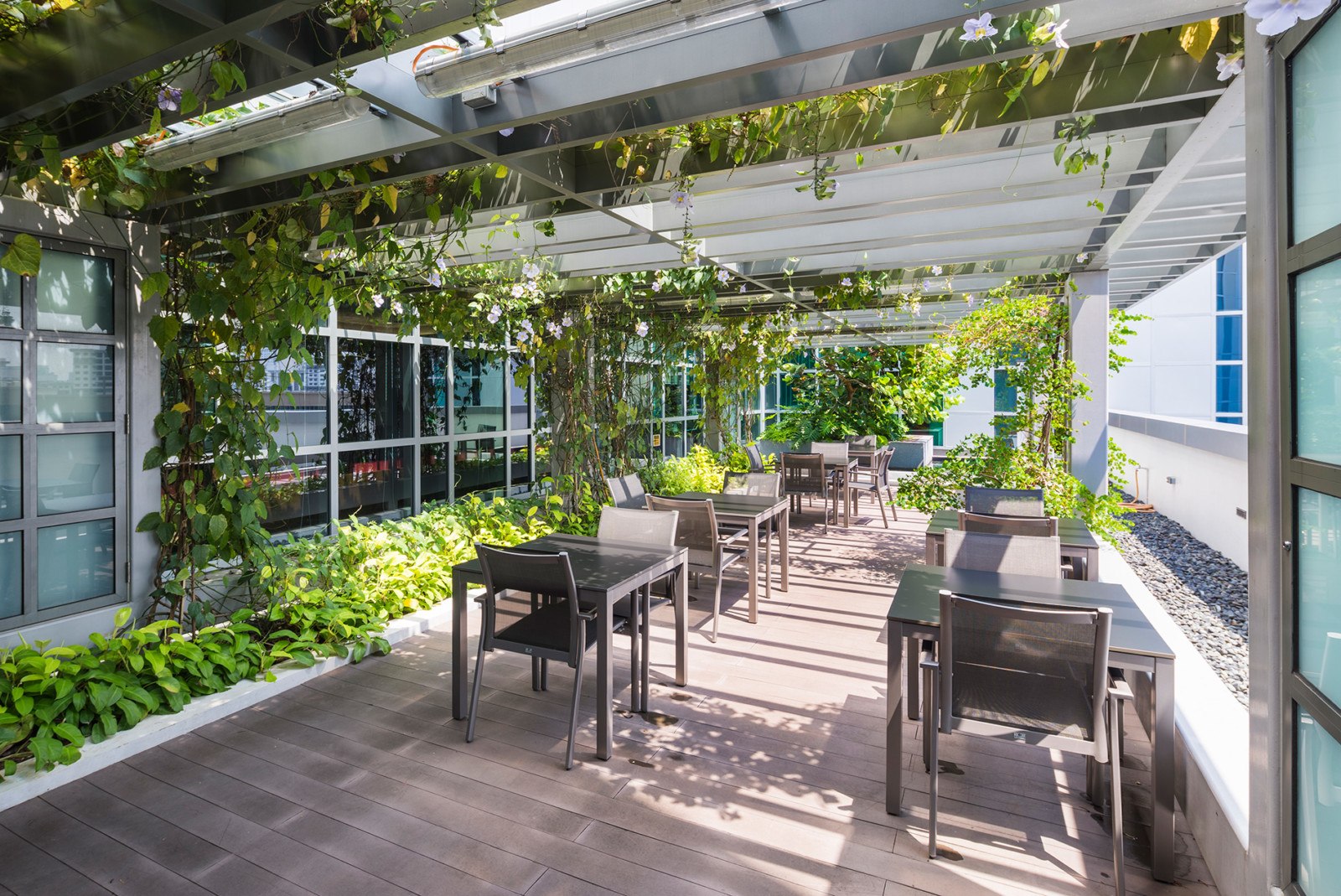
Shining Light
Light affects people’s circadian rhythms, which impacts our sleep patterns and immune systems. Even in the best circumstances, most healthcare workers don’t get the amount and type of light required to fully stimulate their circadian rhythms.
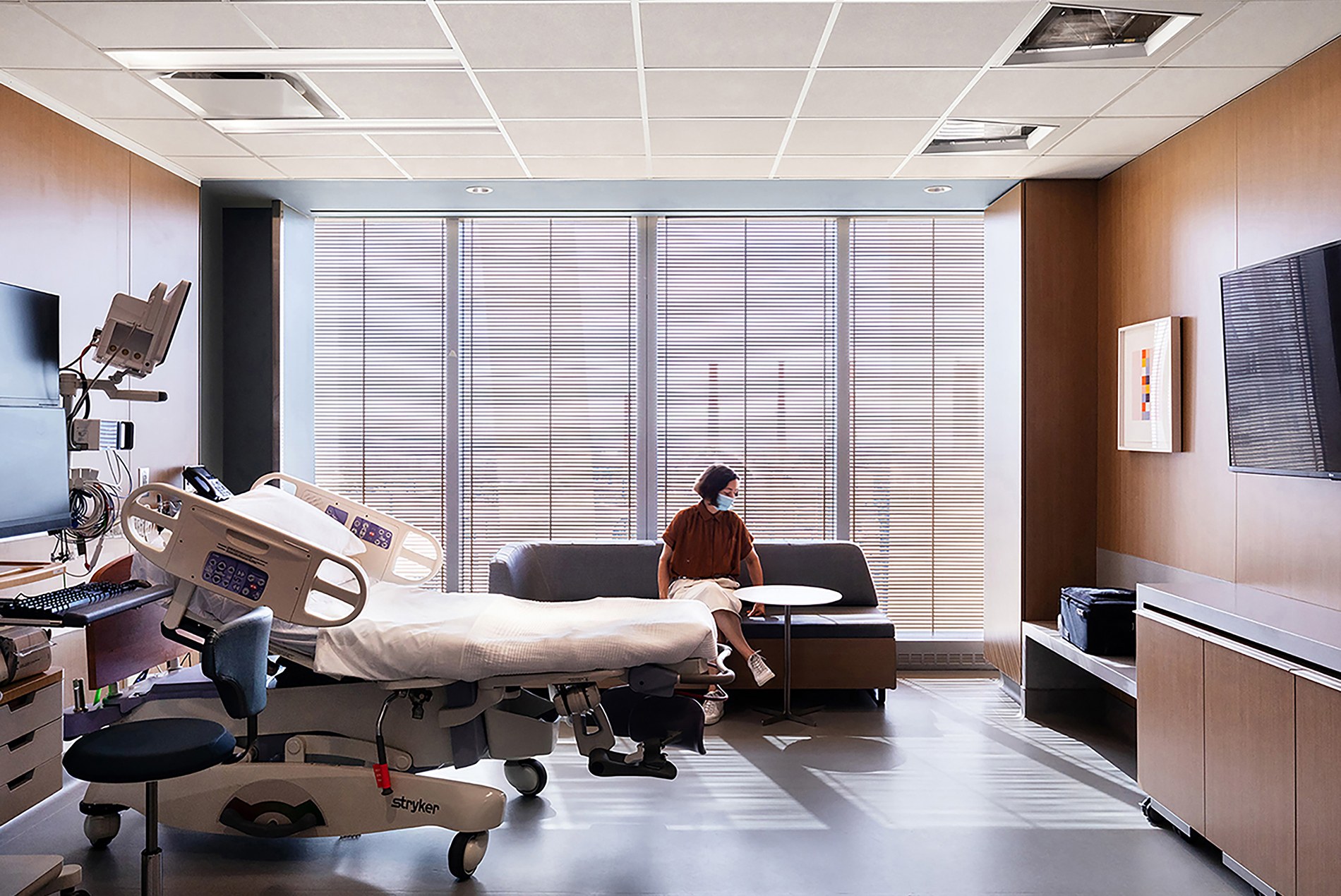
Though it’s standard for patient rooms to include lighting controls and access to outdoor views and daylight, that’s not always the case for staff spaces. Lighting systems can support circadian rhythms by changing color temperature over the course of the day.
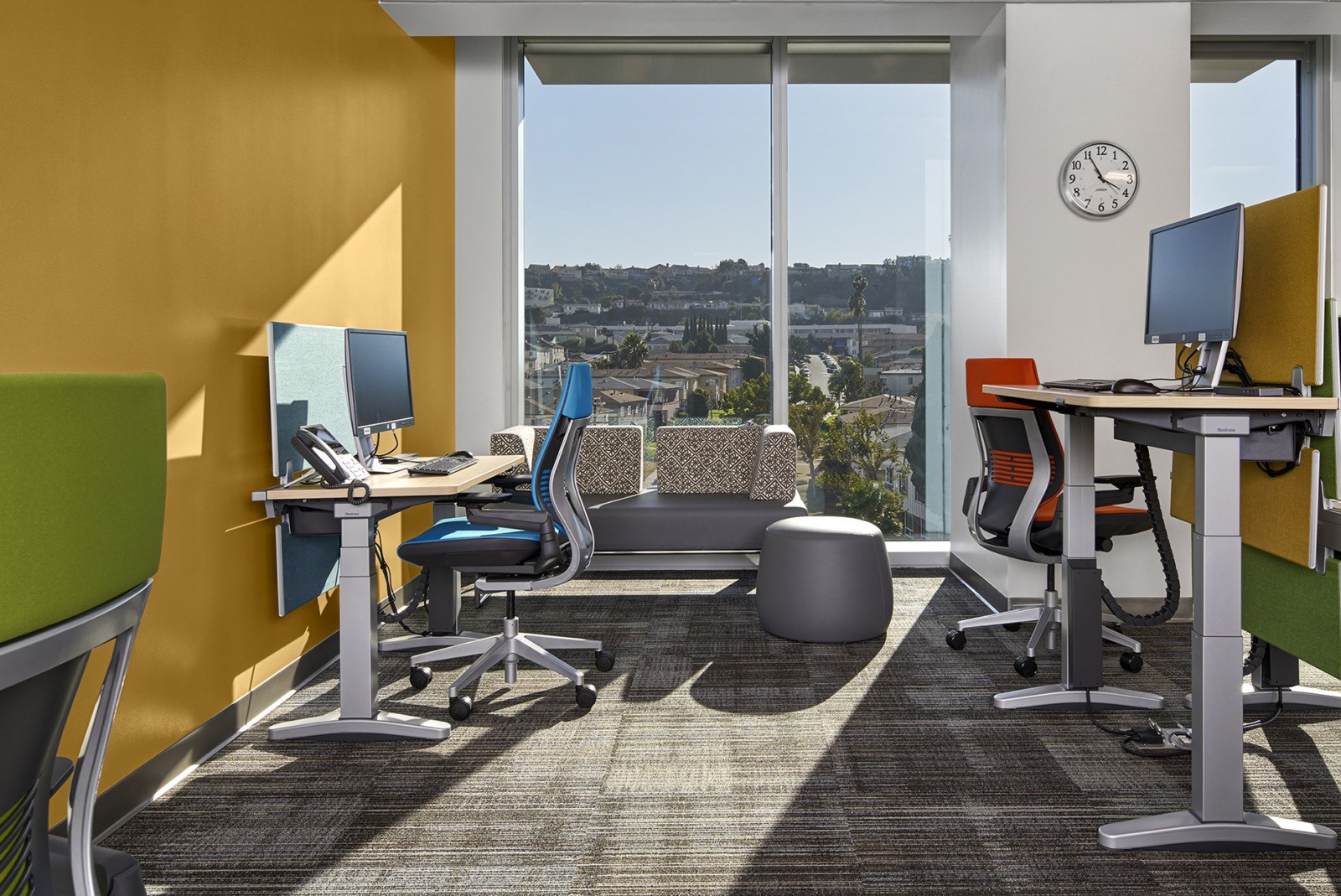
For weary staff, experiencing a burst of light can have the same effect as drinking a cup of coffee. Providing access to dimmable lighting is an especially vital part of maintaining the well-being of healthcare workers who regularly arrive at the hospital before sunrise, leave after sunset or work the night shift.
Respite Rooms
Respite rooms—dedicated spaces for healthcare workers to recharge—can be part of the solutions.
These spaces should be strategically located for easy access and engage people’s senses. Peaceful graphics and lush plants, calming scents and music, comfortable furniture and access to healthy food and drinks all can provide relief.
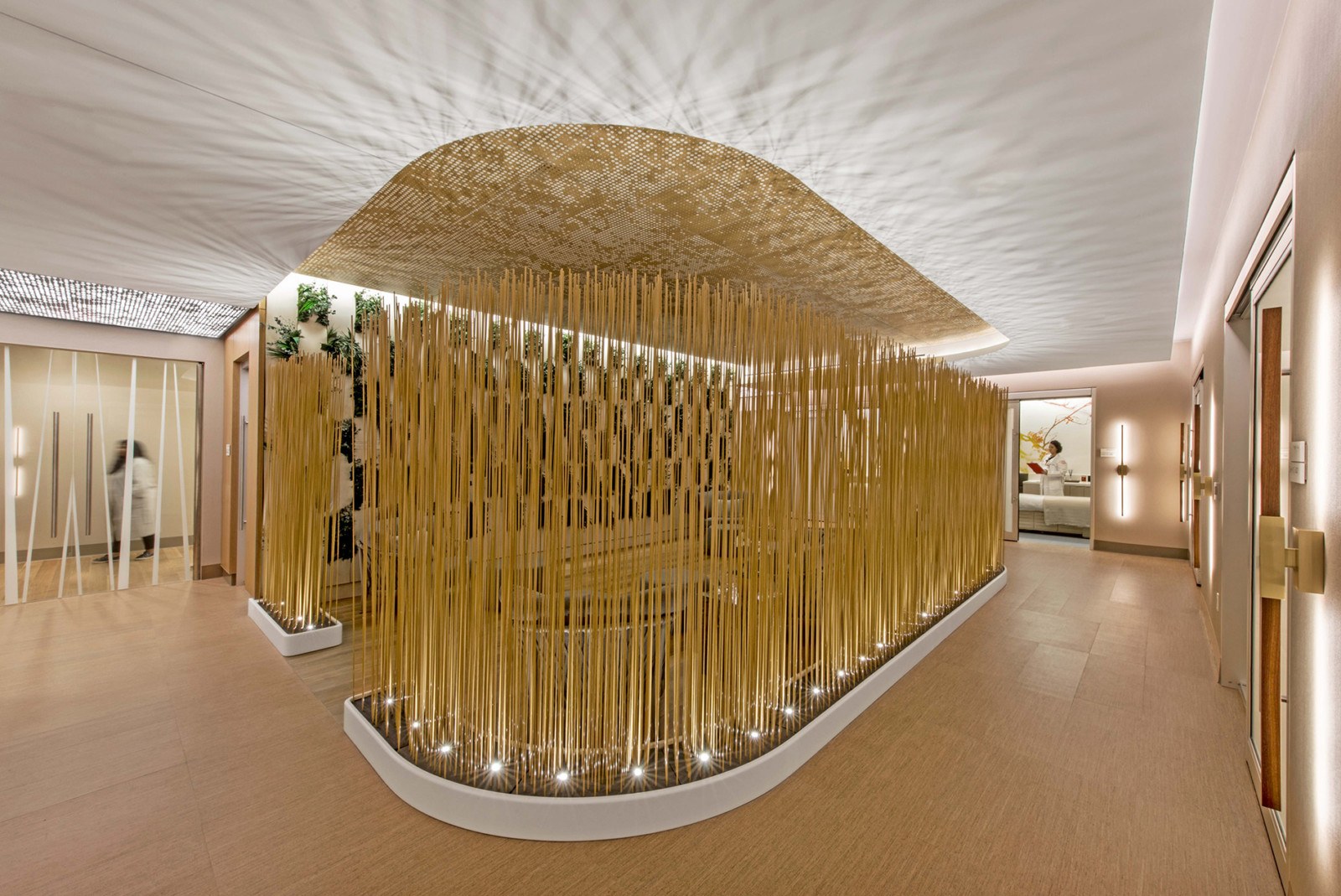
Providing additional quiet spaces for support services like counseling or pastoral care also is important.
Respite and quiet spaces should be acoustically separated from the work environment, giving people a break from the background noises and an opportunity to disconnect from their work.
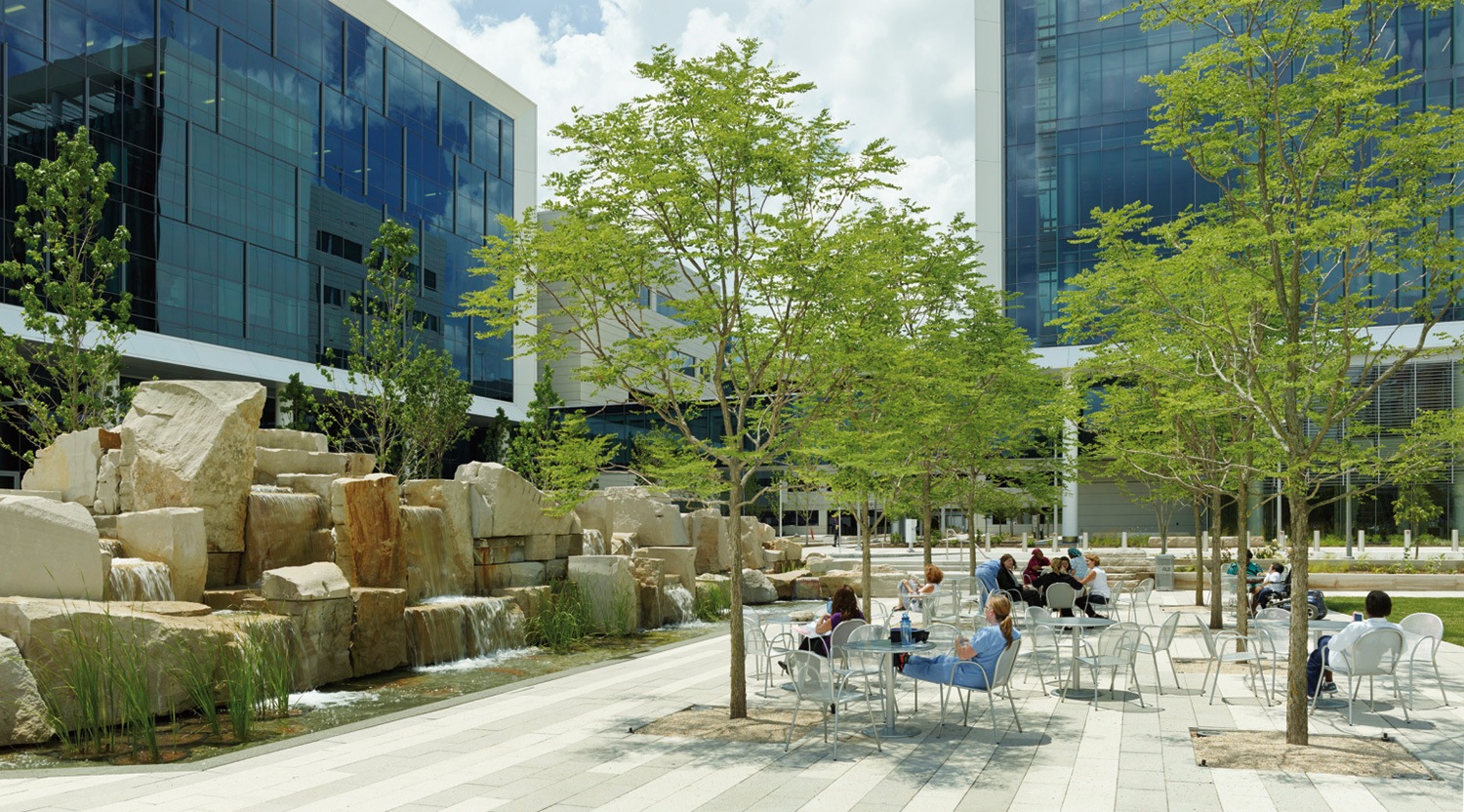
Supportive Policies and Culture
Respite rooms and outdoor patios are only valuable if institutions encourage their people to use them. While thoughtful design of the built environment can ease some of the mental health issues facing clinicians, it is only one aspect of an organization’s efforts to create a supportive, empathetic culture.
Related: In this Fast Company column, HOK Healthcare group Chief Medical Officer Andrew Ibrahim and Senior Healthcare Consultant Kathleen Schwarz draw on their experiences on the frontlines of COVID-19 to explore how to improve conditions for hospital staff.